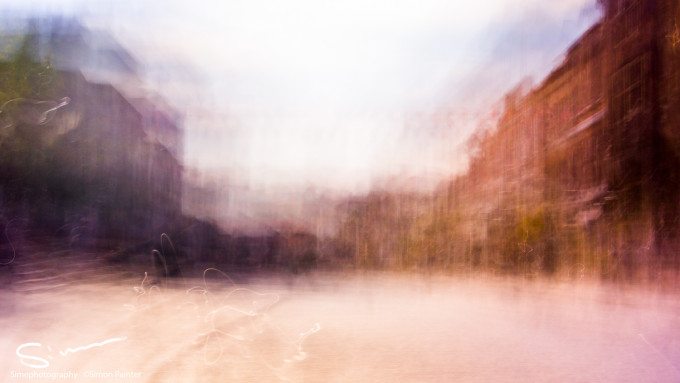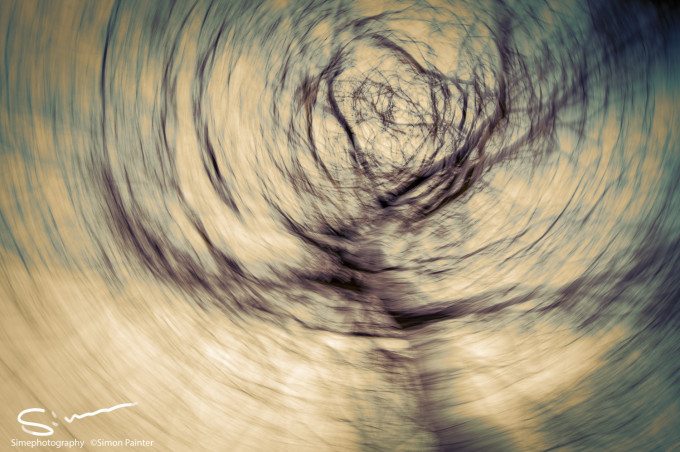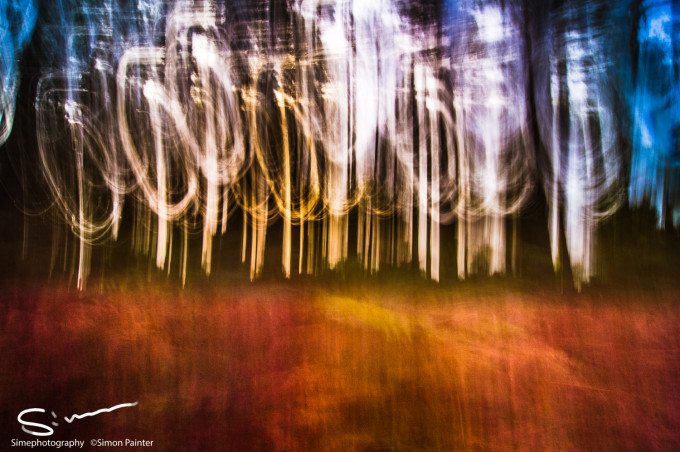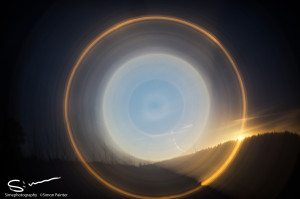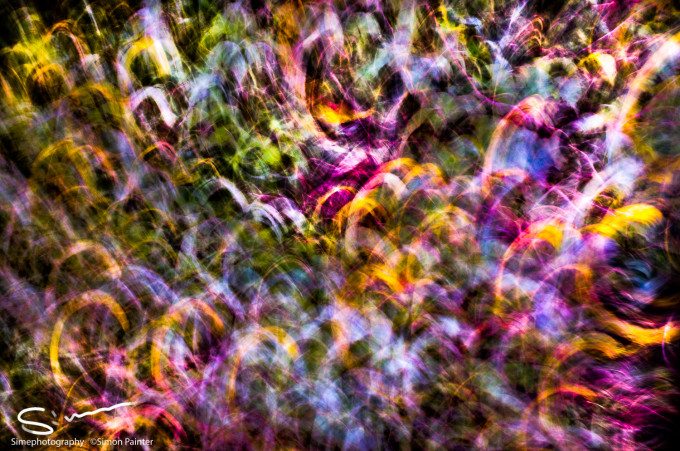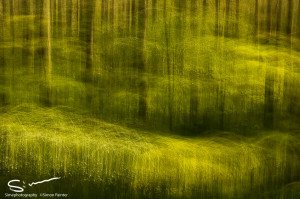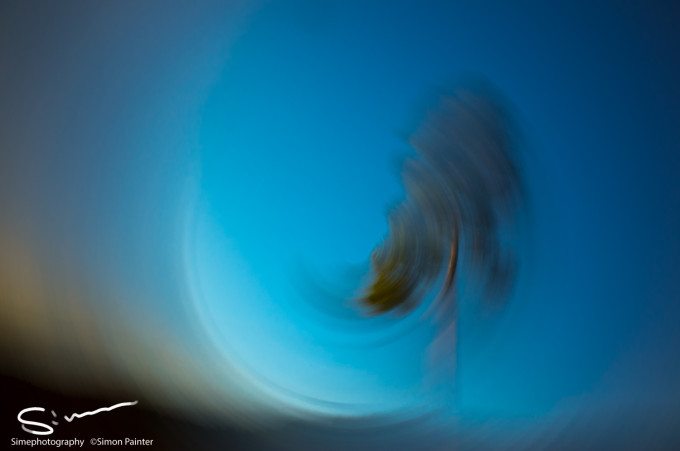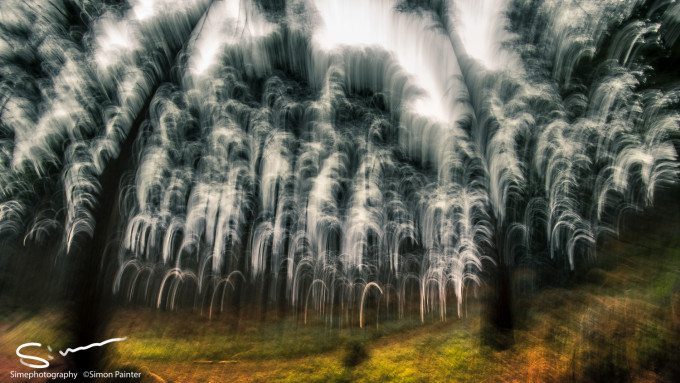Last Updated on 01/06/2015 by Chris Gampat
All images by Simon Painter. Used with permission
Simon Painter is a photographer that has the word “creative” written all over him. Hailing from Surrey in the UK, he’s been in the music industry for 25 years with a myriad of creative jobs. Some of the work has been features on Friends, Tour de France, Mazda, Budweiser, and Vodafone. But not long ago, the photo bug in Simon started to emerge from its cocoon.
When he emailed us asking for critique of his abstract images we were incredibly astonished to hear that most of the work is done in the camera with only minor boosts in post-production. His images have an almost painterly look to them. And so we just had to know how he did them and his creative processes.
Phoblographer: How did you get into photography?
Simon: When I was a boy my uncle gave me a Zenit E SLR camera. At that time I didn’t really understand the technicalities behind what i was doing but I loved to experiment with different settings and create scenarios to photograph. I guess the seed was sown then but it lay dormant until recent years. As a freelancer I’ve always enjoyed designing visual projects to support my business from letterheads and websites to music album art and photography seems to have been a natural progression of this constant fascination with the visual world. I have spent a career as a music composer/engineer/producer and in this field we constantly take natural acoustic sounds and manipulate them with the technology available to create atmospheres that reflect the mood we’re trying to create.
Being a gadget geek and a creative, I love this way of working and when I got my first DSLR, many years later, I just started to explore and I was fascinated with what I was able to create.
Phoblographer: How do you say you use photography? To create art? To express emotions? Why do you do it?
Simon: My photography is definitely an emotional thing. Sometimes when I’m out in the world around me I’m filled with a rush of excitement that is quite physical and sometimes overwhelming. It’s really hard to describe but I think it’s a combination of the amazing beauty of things and a realization that I exist as a tiny spec in amongst it all. Even an apparently still landscape scene is a combination of so many things in that moment.
Obviously the visual content is most prominent from a photography point of view but there are the sounds and smells and even the temperature, also the journey one has taken to get there all contribute to one’s emotional response. A scene is also never actually still and is always evolving even if only very slightly into a unique moment that will never happen quite like that again. I get such a buzz from trying to capture these moments I feel compelled to take my camera out and try and get that elusive amazing shot and there’s a real sense of loss, that I’m sure many photographers feel, if I come across a scene without my camera.
“My photography is definitely an emotional thing. Sometimes when I’m out in the world around me I’m filled with a rush of excitement that is quite physical and sometimes overwhelming.”
Phoblographer: What attracts you to creating abstracts?
Simon: I never set out to create abstracts but i found myself drawn to these abstract images because I want to convey something of this emotion and tingle at the back of the neck I feel that I cannot express in words. The scenes I observe seem to have more to give than straight forward representation would allow. Often it’s an overwhelming and complex thing and many of my images end up the same.
Phoblographer: What fascinates you more and why: color, composition, or context of a scene?
Simon: I guess out of those I would say colour but I’m really fascinated by light and contrast as well. I am drawn to situations where there is hard light as this creates more defined textures in my finished pieces. I think texture may be the key for me! With post production I will try to enhance the contrast and colour that seems to lurk inside the scene. I love that this technique can bring the observers attention to the light between objects instead of the objects themselves. Composition seems more important to me when the scene is minimal as the placement of objects is then key. It can be challenging to get the composition right whilst moving the camera around and movements sometimes have to be refined over several shots to achieve the desired result.
Phoblographer: Talk to us about how some of these images are done.
Simon: My abstract work began when I pointed the camera upwards into the branches of a tree. I used a shutter speed that would give me time to move the camera around the trunk about a quarter turn during the exposure. At that time I didn’t have a neutral density filter so the images I got were fairly overexposed but when I got them into the computer I was able to retrieve the trace of the branches all fanned out in a web like texture which really caught my imagination and I’ve been hooked ever since. I have investigated moving the camera in many different ways since that time. With a neutral density filter, reducing the amount of light through the lens, I have been freed up to explore exposures as long as 8 to 10 seconds.
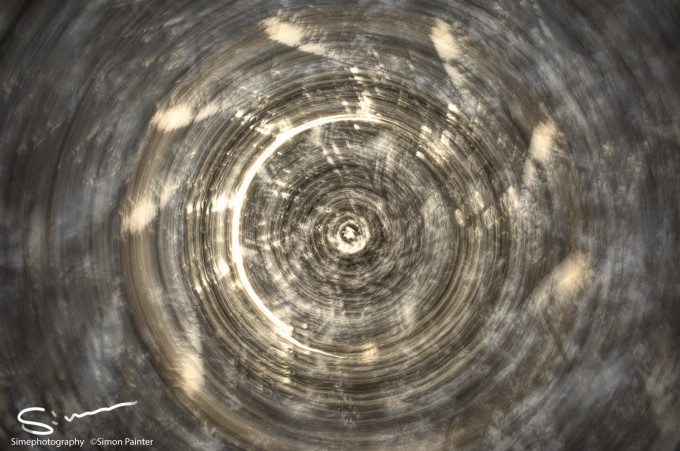
Many of my images are created using freehand motion of the camera. It often takes a few test shots to see what works with a given subject. Freehand circles lead to a scribbled sort of look where the many points of light through trees, for example, will all trace their individual path much like a sort of reverse light painting. The light traces that are “painted” are the reverse of the camera movement hence a U shape becomes inverted into a n. You have to work out in your head how to draw things upside down and backwards! I have built a simple jig on a tripod to allow more controlled movement such as circles and even star shapes which leads to more order in the image. I’ve done many rotations about an axis through the centre of the lens, many by hand but recently in a controlled way on a tripod. This results in some great “radar sweeps” of the tones of a scene.
With all this camera movement, as well as the motion aspect of the process there is a speed or time aspect to consider too. If for example one opens the shutter whilst the camera is moving and then maintains a constant speed the image will be lines of light and colour that reflect the motion. If however one opens the shutter whilst stationary and then starts to move, a print of the stationary scene will be present behind the movement trace. You can extend this process like in my image “Catherine Wheel”. Here I performed a full rotation in 6 seconds of the camera but slowed to almost a stop at points during the movement to create a repeating pattern. In “Growing Towards The Light” I had several attempts to create both the right movement path and also the right speed so that I effectively bent he trees but was still left with the sense that they were trees in the ground. This was a 4 second exposure. I tend to use smaller apertures as this leads to more of the light traces or forms being shaper and more defined. I also always shoot RAW so that I have more flexibility when I get the images into the computer.
Phoblographer: What kind of gear do you use?
Simon: I started this journey with a Sony A55 using an cheap variable ND filter. This was a pretty flexible set up but I wanted a smaller more portable solution. After much research I bought a Ricoh GR. This has proved to be an amazing camera for me. It has a fixed 28mm equivalent lens which is nice and wide which seems to work well for my style. I use a Hoya PROND200 ND filter giving a 7 2/3 stops reduction in light. I have also used the wide angle adapter for the GR. This gives my an even wider viewpoint and the lens distortion at the edges also adds to the effect for me. My tripod is a light weight Giottos carbon 8225 which means that with the GR and Tripod over my shoulder I can wander about without really being aware that I’m carrying my full kit. As I mentioned I have a jig attached to a tripod head where the handle goes through a piece of wood with various shapes cut out allowing controlled movement. It’s not that sexy but it does the job. I would really like to find a way of getting more complex and controlled movement but I have yet to find what I’m looking for.
My primary editing is done using Lighroom but I also use Nik plugins and some Topaz labs plugins to give myself more options.


